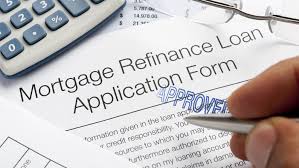The Basics To Getting A U.S Mortage
Canada and the United States have a lot in common. Most obvious perhaps is that they both share the North American continent, they speak the same language and they both like Justin Bieber! One thing that differentiates them, however, is the weather. Parts of the United States enjoy a warm weather all year round, something Canada does not have.
As a result, many-a-Canadian have invested in property in the U.S. to enjoy some of this warm weather. However, considering the nosedive of the loonie and an increase in home prices in the U.S., Canadians are finding it more difficult to invest in a warm getaway south of the border. With that being said, here are some tips on how to invest in a U.S. mortgage

#1. It Is Not A Great Time For Cash Payments
In the past, it was common for Canadians to cash out on equity investments and savings to buy a home in the US when the exchange rate was a bit more favorable.
These days, with a weaker dollar, a mortgage is a lot more desirable given the low-interest rates.
The most important thing, however, is to consider the few differences when it comes to mortgages in the U. S.
#2. It usually takes time.
In Canada, it might take just a few working days to apply for and obtain a mortgage but in the United States, it might take about 60 days for the process to be completed.
#3. A lot of documentation is required.
For most U.S mortgages, over 10 documents are required especially because of different regulatory requirements as opposed to Canada where just less than five is required.
#4. Interest is calculated differently.
In the U.S, fixed rate mortgages are compounded monthly compared to the semi-annual and monthly computation and calculation for a fixed-rate mortgage and variable-rate mortgage respectively.
#5. There are more fees and payments to be made.
Buyers can expect to pay 3-5% in fees because of third-party expenses like titles, insurance requirements, property appraisal, etc.
#6. Down payments are higher.
A down payment of at least 20% of the home’s value is now the U.S standard although it is subject to fluctuations, depending on whether the home is a private residence, second home or an investment property.
#7. Amortization is longer.
Although now extinct in Canada, the 30-year mortgage is very much in the United States, with the option of locking in rates over that period of time, a situation all but unheard of in Canada. “S. mortgage products provide much longer rate terms including up to 30 years at very low rates,” says Miles Zimbaluk, director of business development with Canada to Arizona, an organization that helps Canadians who are visiting or living in the Southwest area.
“S. mortgage products provide much longer rate terms including up to 30 years at very low rates,” says Miles Zimbaluk, director of business development with Canada to Arizona, an organization that helps Canadians who are visiting or living in the Southwest area.
He notes that in Canada, you can get a 25-year term rate but rates are now on the increase, thus buyers are stuck with the one- to-five-year term rates. He adds that Canadian buyers are in the main getting younger which suggested that most of them are likely to seek mortgages rather than making down payments. A mortgage broker, whose company assists Canadian buyers to get in touch with realtors, mortgage lenders and brokers, adds that quite a number of them were buying vacation homes younger in life either as an investment to take advantage of the lower priced U.S real estate or because they wanted to work remotely or even have some relaxation time.
A Calgary-based executive, Evelyn Studer, who owns three properties in Phoenix, paid cash on every purchase. However, for her most recent purchase, since it was a rental property, she was turned down for a U.S mortgage. So, she then obtained a U.S home equity line of credit, which she used to install a pool and finance other improvement projects on her property. In fact, she didn’t encounter many issues when obtaining the line of credit which was the same with what was obtainable in Canada. According to her, “They just needed a letter of guarantee from my company regarding my present employment amount and title, my last two years tax returns and some financial information on my assets and liabilities.”





